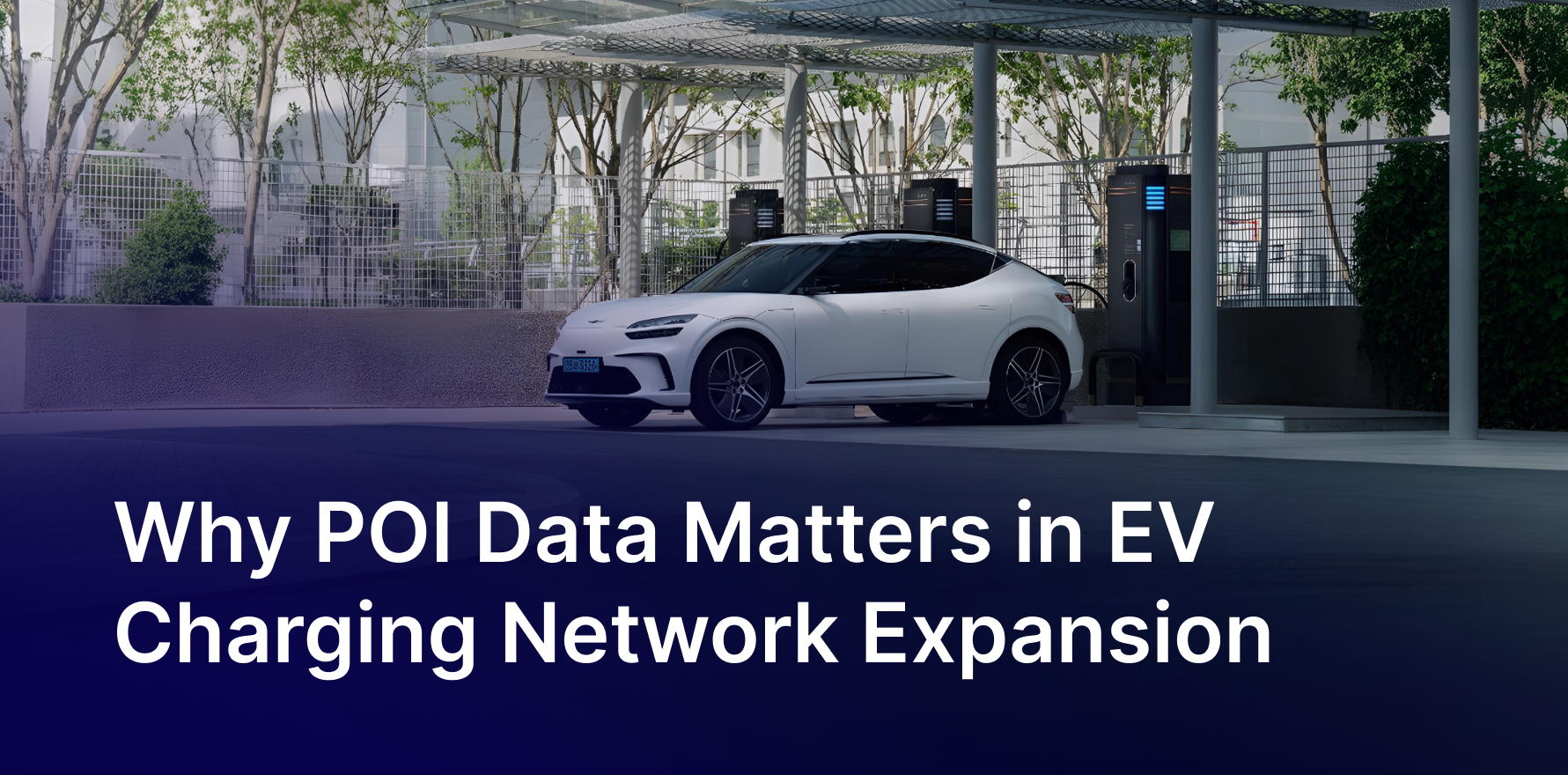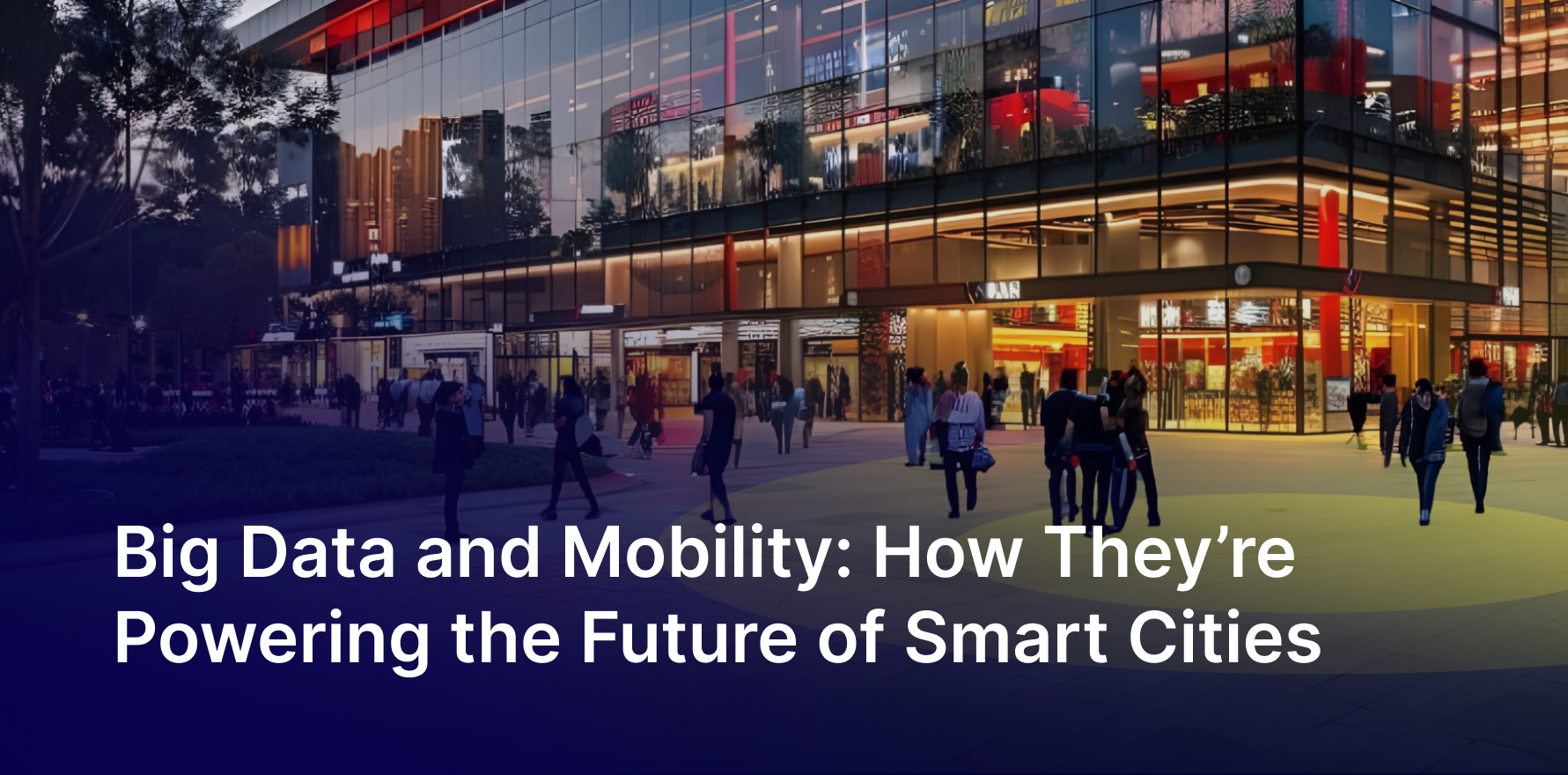The global shift toward electric vehicles (EVs) is accelerating, but the infrastructure to support them often lags behind. Poorly placed charging stations can result in low utilization, wasted investment, and persistent range anxiety among drivers.
To solve this, charging networks, city planners, and businesses are turning to Point of Interest (POI) data. By mapping where people live, work, shop, and travel, POI insights make EV charging deployment smarter, more profitable, and more user-friendly.
What is POI Data in the Context of EV Charging?
POI data refers to detailed information about real-world locations that matter to consumers and businesses. These include:
- Shopping malls and retail hubs
- Restaurants and cafés
- Gas stations and convenience stores
- Hotels, airports, and tourist attractions
- Residential complexes and office parks
In EV charging, POI data helps operators understand where drivers spend time, making those places ideal for charging. Unlike generic maps, POI data provides a granular layer of contextual intelligence, revealing not just locations, but relevance, accessibility, and demand potential.
Read About: What is POI Data?
Who Benefits from POI-Driven EV Charging Stations Deployment?
POI data creates value for a wide range of stakeholders:
- EV Charging Network Operators: Place chargers in high-demand areas, maximize station usage, and improve return on investment.
- City Planners & Policymakers: Ensure charging infrastructure supports sustainability and equitable access across neighborhoods.
- Retail & Hospitality Businesses: Attract EV-driving customers by offering charging while they shop, dine, or stay overnight.
- Fleet & Logistics Companies: Secure reliable charging points along delivery and commuting routes.
- Real Estate Developers: Future-proof properties by integrating EV-ready facilities in strategic locations.
Real-World Scenarios: How POI Data Transforms EV Deployment
- A Retail Chain Adding EV Chargers in Suburban Dallas: Customers can charge while shopping, boosting both sales and station use.
- Highway Fast-Charging Along the I-35 Corridor: Strategic placement reduces range anxiety for commuters and long-distance travelers.
- Hotels in Austin Offering Overnight Charging: Tourists choose accommodations that support eco-friendly travel.
- Smart City Planning in San Antonio: Using POI data, city planners identify underserved areas and balance infrastructure across communities.
Types of POI Data That Matter for EV Infrastructure
Not all POI data is equal. For EV charging, the most valuable layers include:
- Geographic data: Latitude/longitude, addresses , critical for mapping charger access.
- Categorical data: Types of POIs, business categories , align chargers with high-demand sectors.
- Behavioral data: Foot traffic, dwell times , ensure stations are used while drivers spend time at a location.
- Mobility data: Commuting patterns, road networks , forecast peak charging demand.
- Contextual data: Reviews, popularity, socio-economic factors , refine location strategies.
Each type of data reduces guesswork, replacing assumptions with evidence-based planning.
How POI Data Supports Smarter EV Deployment Decisions
For decision-makers, POI data is more than maps, it’s actionable intelligence. It enables:
- Choosing high-demand zones where drivers naturally congregate.
- Understanding competitor placement to avoid oversaturation.
- Aligning infrastructure with consumer lifestyles, such as shopping or commuting.
- Forecasting growth hotspots for EV adoption, ensuring infrastructure scales with demand.
In short, POI insights help operators make confident, data-driven investments.
Challenges in Using POI Data for EV Infrastructure
While powerful, POI data must be applied carefully:
- Data freshness: Businesses close or relocate, requiring regular updates.
- Accuracy: Inconsistent datasets can mislead infrastructure planning.
- Privacy: Behavioral and mobility data must comply with regulations.
- Infrastructure balance: POI-driven placement must align with grid capacity and zoning laws.
Recognizing these challenges ensures better execution and sustainable growth.
The Future of POI Data in EV Charging Networks
As EV adoption grows, POI data will become even more central to infrastructure planning. Future trends include:
- AI & predictive analytics for demand forecasting.
- Smart city integration, linking EV charging with public transit and renewable energy grids.
- Personalized charging recommendations through EV apps, guiding drivers to the most convenient stations.
By combining POI insights with predictive modeling, cities and businesses can build EV ecosystems that are scalable, efficient, and future-ready.
Conclusion
The importance of POI data in EV charging station deployment cannot be overstated. From maximizing utilization and improving customer experience to supporting sustainability and urban mobility goals, POI insights are the foundation of smarter EV infrastructure.
By embracing data-driven strategies, operators, businesses, and cities can accelerate the transition to electric mobility, and ensure that every charging station is in the right place, at the right time.
Talk to an Expert for a personalized recommendation on how Factori’s POI data can help you identify high-demand EV charging locations, optimize site planning, and accelerate your network expansion with confidence.
You may also like










